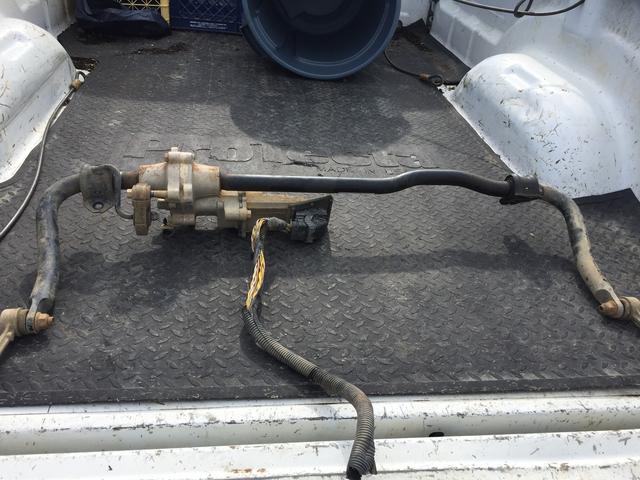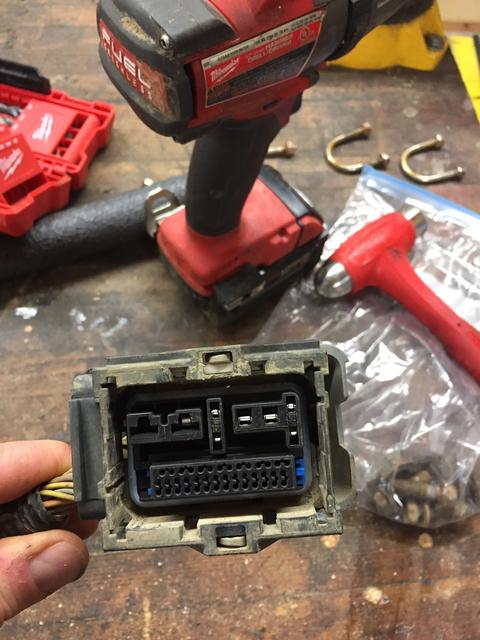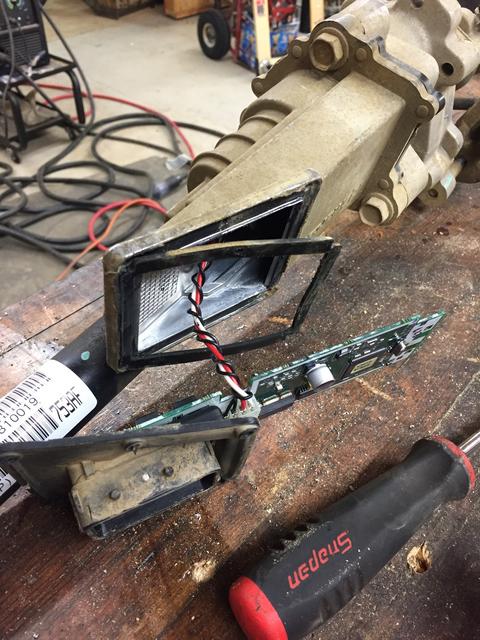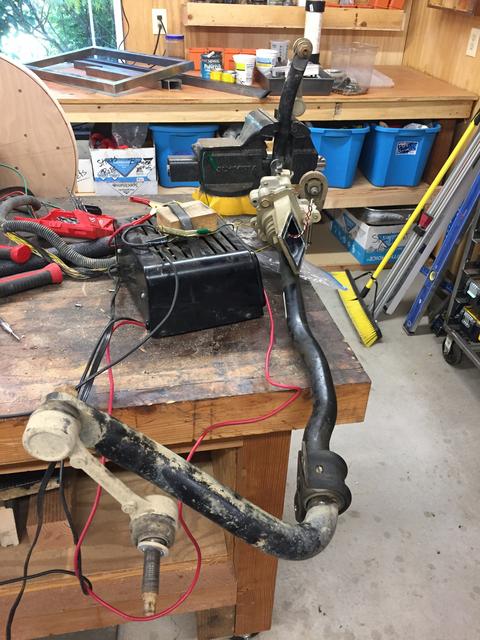chris_the_wrench
Fixer & Builder of Things
Howdy all,
Ever since I got my 06 cummins ram over ten years ago I've been lusting after a anti-sway bar that could be set free. I'm currently running a Carli/Thuren/King love fest of suspension goodness. When I put my thuren coils on it(probably 8 years ago) I made my own end links that had removable pins that allowed it to flex like I wanted, but that was kind of a pain. I have to climb around in the dirt and secure the sway bar to the frame, and it's still always flopping around making a bunch of noise plus they sometimes need some extra help getting realigned. Everyone, probably, knows the power wagon has a OEM anti-sway bar that can be electronically disconnected. Dodge sells it for around $1200'ish. I've been searching junkyards for years looking for one to adapt to my truck, and well a couple weeks ago I finally found one and got it for a crazy good price.

The OEM unit in the power wagon relies on alot of electronic/computer thinking to limit when people can engage and disengage the anti-sway bar. This is the OEM plug that connects to the motor on the unit.

I drilled out the rivets and removed the plate and connected circuit board and found four wires controlling the actual motor and was hoping I could figure out a simple way to control the unit.

After abit of experimenting I found the red and white wires powered a motor that pushed a pin to activate the disengagement, great news!, however when power was removed the motor automatically retracted the pin and locked the sway bar. Also the motor would continue to run when power was applied pushing against the pin, and would burn itself out if power was not removed. Then I spent sometime surfing the jeep forums and found a mention that the two black wires are a magnetic lock on the pin.
In attempt to clarify the operation, power is applied to the red and white wires to extend the pin, power is then applied to the black wires to hold the position and power is cut to the red and white wires. This allows the sway bar to be disconnected. When locking is required, power is cut to the black wires and the pin re-engages.

So now that I have an idea of how it works on the bench, I need to make it work in my truck. I just ordered a rocker switch from rockerswitchpros.com that is a off-on-momentarily on switch. My plan is to wire it up so the magnetic lock is powered in the ON position, the motor is power in the MOMENTARILY ON position. That way I can activate the motor for the second it needs and releasing the switch will power the magnetic magnet so it catches the pin in the proper location.
I should have the switch in a couple days to try my theory. I'm also wondering that when the motor is powering the pin and it reaches the farthest point the pin can travel and starts to bind, I'm imagining the amperage will spike abit higher. So I'm thinking some kind of auto-reset fuse to the power line may be useful.
And if this whole electrical system ends up being a total nightmare, I'll just install and EVO MFG manual pin.

Any thoughts or ideas, would be great. I'll try to attach a movie clip of the motor running out of the assembly, I ran it too long in the video.
-Chris
Ever since I got my 06 cummins ram over ten years ago I've been lusting after a anti-sway bar that could be set free. I'm currently running a Carli/Thuren/King love fest of suspension goodness. When I put my thuren coils on it(probably 8 years ago) I made my own end links that had removable pins that allowed it to flex like I wanted, but that was kind of a pain. I have to climb around in the dirt and secure the sway bar to the frame, and it's still always flopping around making a bunch of noise plus they sometimes need some extra help getting realigned. Everyone, probably, knows the power wagon has a OEM anti-sway bar that can be electronically disconnected. Dodge sells it for around $1200'ish. I've been searching junkyards for years looking for one to adapt to my truck, and well a couple weeks ago I finally found one and got it for a crazy good price.

The OEM unit in the power wagon relies on alot of electronic/computer thinking to limit when people can engage and disengage the anti-sway bar. This is the OEM plug that connects to the motor on the unit.

I drilled out the rivets and removed the plate and connected circuit board and found four wires controlling the actual motor and was hoping I could figure out a simple way to control the unit.

After abit of experimenting I found the red and white wires powered a motor that pushed a pin to activate the disengagement, great news!, however when power was removed the motor automatically retracted the pin and locked the sway bar. Also the motor would continue to run when power was applied pushing against the pin, and would burn itself out if power was not removed. Then I spent sometime surfing the jeep forums and found a mention that the two black wires are a magnetic lock on the pin.
In attempt to clarify the operation, power is applied to the red and white wires to extend the pin, power is then applied to the black wires to hold the position and power is cut to the red and white wires. This allows the sway bar to be disconnected. When locking is required, power is cut to the black wires and the pin re-engages.

So now that I have an idea of how it works on the bench, I need to make it work in my truck. I just ordered a rocker switch from rockerswitchpros.com that is a off-on-momentarily on switch. My plan is to wire it up so the magnetic lock is powered in the ON position, the motor is power in the MOMENTARILY ON position. That way I can activate the motor for the second it needs and releasing the switch will power the magnetic magnet so it catches the pin in the proper location.
I should have the switch in a couple days to try my theory. I'm also wondering that when the motor is powering the pin and it reaches the farthest point the pin can travel and starts to bind, I'm imagining the amperage will spike abit higher. So I'm thinking some kind of auto-reset fuse to the power line may be useful.
And if this whole electrical system ends up being a total nightmare, I'll just install and EVO MFG manual pin.

Any thoughts or ideas, would be great. I'll try to attach a movie clip of the motor running out of the assembly, I ran it too long in the video.
-Chris


